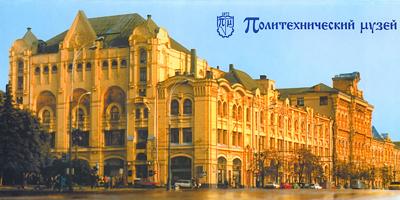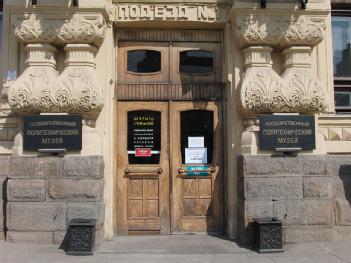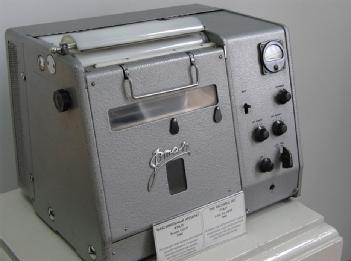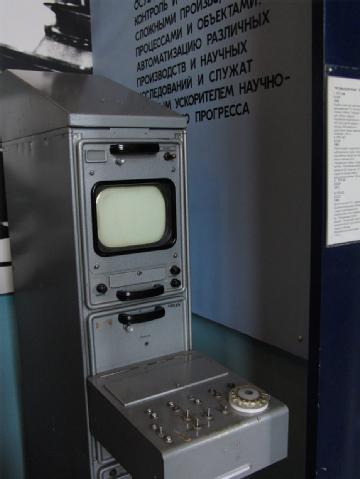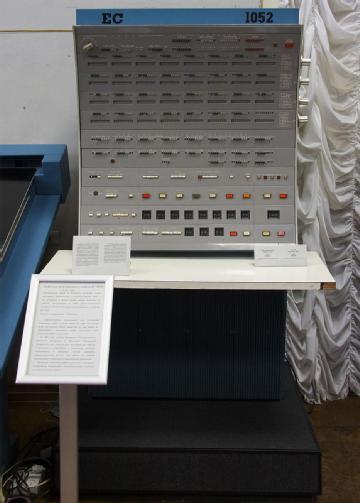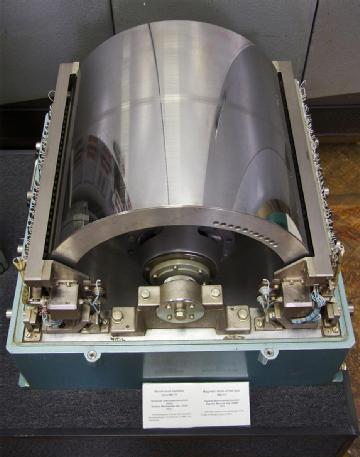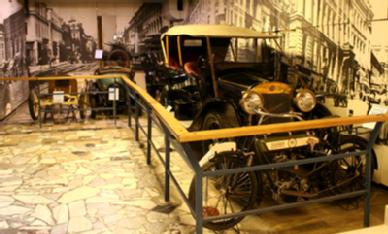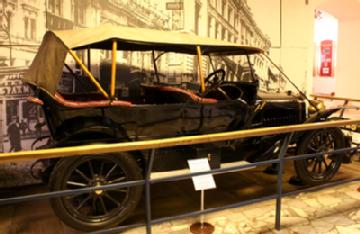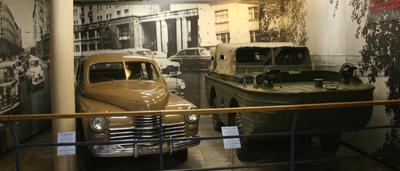
Polytechnical Museum - Политехнический музей |
129223 Moskau - Moscow - Москва, Russian Federation |
|
| Address |
119 Mira Ave. (VDNKh), bldg. 26
|
| Floor area | only roughly guessed: 40 000 m² / 430 556 ft² |
Technical Museum in general
- Passenger cars
- Robotic
- Nuclear / Radiation
- Typewriter, calculating and coding
- Motorcycles / Motorbikes
- Science Museums in general
- Model Cars
- Wire- & tape recording
- Record players with pick up
- Architecture
- Photo cameras and slide projectors
- Clocks and Watches
- Air and Space (aviation, spaceflight etc.)
- Model Aircraft and Aviation
- Modern technologies in general
- Electronic Musical Instruments
- Media
- Radios (Broadcast receivers)
- Telephone / Telex
- Transport in general
- Computer / Informatic
- Railway
- Gramophone (no electrical sound transmission)
- Lamps and Light
- Appliances (Scales, Stamping, etc.)
- Movie recording and playback
|
Opening times
|
Tuesday to Sunday: 10:00 - 20:00
с 10:00 до 16:00
|
||||||||
|
Status from 11/2019
|
We don't know the fees. | ||||||||
| Contact |
|
||||||||
| Homepage | polymus.ru | ||||||||
| Location / Directions |
|
Some example model pages for sets you can see there:
| Description | From Wikipedia, the free encyclopedia: The Polytechnic Museum is the largest technical museum in Russia, and houses a wide range of historical inventions and technological achievements, including humanoid automata of the 18th century, and the first Soviet computers. The collection contains over 170,000 items in 65 halls including, chemistry, mining, metallurgy, transport, energy, optics, automation, computer engineering, radio electronics, communications, and space exploration. Highlights include the first achromatic telescope; an early solar microscope by German anatomists Johann Nathanael Lieberkühn; an early seismograph by Boris Borisovich Galitzine; galvanoplastics by Moritz von Jacobi; and early electric lights by Pavel Yablochkov. Collections As of January 1, 2013 the museum fund of the museum consisted of 229,348 items. The museum features about 150 museum collections of national and world importance. The funds of the museum are dominated by scientific and technical typological collections consisting of functional technical objects. They can be used as a source of information about the main stages and directions of the development of a particular type of technology. A highlight of the museum is the collection of vehicles, including the sections Bicycles, Motorcycles, Cars. The pearl of the car collection is the world only surviving Russian car built before the Revolution Russo-Balt K12/20 released in 1911. All technologies combined in the thematic fund "Electronics and Communication" is presented in the collections "Exchanges", "Sound recording and playback technique", "TV receivers", "Radio receivers". Museum collection "Telephones" shows the development of terminal telephone systems from Bell's receiver to modern mobile phones. The collection "Telegraph technique" includes all types of telegraph and facsimile techniques since the creation of the first electromagnetic machine by P.L. Schilling in 1832 and until 1980-s. The collection of computing equipment is the most comprehensive display in Russia and includes rare copyrights devices, such as automated abacus by Viktor Bunyakovsky, one of the first models of Odner's adding machine, the only surviving copy of the domestic computer "Ural", hydraulic integrator by Vladimir Lukyanov, the world's only computer based on ternary logic, "Syetun" and many other rarities. |
| Description (other) |
Политехнический музей – национальный музей истории науки и техники, один из крупнейших научно-технических музеев мира. |
[dsp_museum_detail.cfm]
| Data Compliance | More Information |


 polymus.ru
polymus.ru 